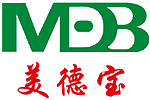-
-
Company Profile
-
Waterproof breathable membrane
Vapor barrier film
Barrier film
Reflective insulation film
Top 5 Applications for Waterproof and Breathable Membranes in Building Projects
Release time:
2025-03-12
In the realm of construction and building materials, waterproof and breathable membranes have emerged as vital components for ensuring structural integrity and comfort within buildings. These membranes serve a dual purpose: they prevent moisture infiltration while allowing vapor to escape, which is crucial for maintaining a healthy indoor environment. As we delve into the top five applications of these membranes, we will highlight their significance and the benefits they bring to various building projects.
One of the primary applications of waterproof and breathable membranes is in residential buildings. These membranes play a critical role in improving energy efficiency. By creating a barrier against water while permitting moisture vapor to escape, they help maintain internal temperatures, reducing the demand for heating and cooling systems.
Maintaining a consistent indoor temperature is essential for energy conservation. Waterproof and breathable membranes contribute to thermal regulation by minimizing heat loss during colder months and preventing heat gain in warmer seasons. This leads to lower energy bills and a reduced carbon footprint.
In residential settings, trapped moisture can lead to the growth of mold and mildew, posing health risks to inhabitants. By allowing vapor to escape while keeping water out, these membranes mitigate the likelihood of mold growth, promoting a healthier living environment.
Commercial buildings are often subject to more significant wear and tear than their residential counterparts. Thus, the role of waterproof and breathable membranes in protecting these structures cannot be overstated.
Water penetration can lead to serious structural damage in commercial buildings. From rusting metal components to rotting wood, the consequences of water infiltration can be costly. Implementing waterproof and breathable membranes during construction helps safeguard against water damage, extending the life of the building.
The external appearance of a commercial building is crucial for business image. Waterproof and breathable membranes assist in preventing water-related stains and deterioration, ensuring that the building maintains its aesthetic integrity over time.
Roofing is one of the most critical areas where waterproof and breathable membranes are utilized. These membranes are essential not only for preventing leaks but also for enhancing the overall performance of roofing systems.
Flat roofs are particularly susceptible to water pooling and leaks. The application of waterproof and breathable membranes provides a protective layer that prevents water accumulation while allowing moisture vapor from the building to escape. This dual-action helps prolong the lifespan of flat roofing systems.
For sloped roofs, waterproof membranes can be applied under roofing materials to ensure that any water that penetrates the outer layer is directed away from the structure. These membranes also help in preventing condensation buildup, which can lead to serious issues over time.
Below-grade areas are particularly vulnerable to water infiltration due to their proximity to the groundwater table. Waterproof membranes act as a barrier against hydrostatic pressure, ensuring that water does not seep into these crucial areas of a building.
By preventing moisture accumulation in below-grade areas, these membranes contribute to better indoor air quality. This is especially important in residential settings where basement living spaces can develop musty odors and health concerns if not properly managed.
As the construction industry moves towards more sustainable practices, waterproof and breathable membranes are becoming increasingly recognized for their role in eco-friendly building.
Using these membranes aligns with sustainable building standards by enhancing the energy efficiency of structures. They reduce the need for energy-intensive HVAC systems, leading to lower energy consumption and reduced greenhouse gas emissions.
Many green building certification programs recognize the importance of using materials that contribute to energy efficiency and indoor air quality. Waterproof and breathable membranes can help buildings achieve certifications like LEED (Leadership in Energy and Environmental Design), making them a smart choice for environmentally-conscious projects.
In conclusion, waterproof and breathable membranes are essential components in modern building projects, offering significant benefits across various applications. From enhancing energy efficiency in residential buildings to protecting commercial structures from water damage, their versatility cannot be overstated. By fostering sustainable building practices, these membranes contribute to healthier indoor environments and longer-lasting structures. As the demand for high-performance building materials continues to grow, investing in waterproof and breathable membranes will undoubtedly become a standard practice for contractors and architects alike. Incorporating these innovative materials into your projects ensures not only compliance with modern building standards but also promotes a safer and more sustainable future in construction.
Previous article
recommend News
Newest Pvc Waterproofing Membrane
2025-03-27
Sell one
Kelly Ho
15133606577
kelly.ho@tjmeidebao.com
Sales two
All- All
- Product Management
- News
- Introduction
- Enterprise outlets
- FAQ
- Enterprise Video
- Enterprise Atlas
Sweep the attention to us

COOKIES
Our website uses cookies and similar technologies to personalize the advertising shown to you and to help you get the best experience on our website. For more information, see our Privacy & Cookie Policy
COOKIES
Our website uses cookies and similar technologies to personalize the advertising shown to you and to help you get the best experience on our website. For more information, see our Privacy & Cookie Policy
These cookies are necessary for basic functions such as payment. Standard cookies cannot be turned off and do not store any of your information.
These cookies collect information, such as how many people are using our site or which pages are popular, to help us improve the customer experience. Turning these cookies off will mean we can't collect information to improve your experience.
These cookies enable the website to provide enhanced functionality and personalization. They may be set by us or by third-party providers whose services we have added to our pages. If you do not allow these cookies, some or all of these services may not function properly.
These cookies help us understand what you are interested in so that we can show you relevant advertising on other websites. Turning these cookies off will mean we are unable to show you any personalized advertising.
Copyright: Tianjin Medabao Technology Co., Ltd.
Business License
-


